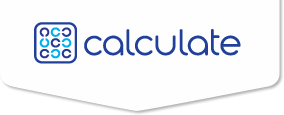How One University’s Website Became Its #1 Recruitment Tool
The Challenge

The Goal
- Develop a marketing-focused website to build enrollment
- Implement strategies to
- Attract high-quality leads
- Convert leads to applicants
- Keep the user’s experience at the forefront
Problems
The old site was dated in terms of content, design, architecture and function. The user’s ability to navigate the site and complete a task (e.g., to apply) was greatly compromised. In short, the site lacked a clear and cohesive strategy.
Additional problems included:
- Site not mobile friendly
- Lack of SEO-friendly headlines and content
- Decentralized model: campus departments maintained their own sections, diluting the institutional brand and key messages
- Text heavy (more than 8,000 pages) leaving the user frustrated and unable to find important content
- No opportunities for easy user engagement and conversions
- Calls to action buried too deep within the site (example: the application form took 4 clicks to access)
- Lack of a cohesive and active voice
- Inconsistency of design and content within sections
The Solution
We believed the university’s website would and could function as its primary marketing & recruitment tool. In creating the new site, we implemented the following:
- Strategy: developed and adhered to a strategy designed to attract and convert high-yielding prospects
- Content: completely re-wrote the site with lean, active, marketing-driven language
- Implemented web- and SEO-friendly headlines and bulleted, scanable text
- Added easy-to-see calls to actions throughout
- Added simple engagement forms on key pages
- Launched a responsive design to cater to the mobile audience
- Reworked the architecture for an easy, intuitive user experience
- Implemented a new design to facilitate user interaction; images, graphics, and buttons draw attention and motivate action
- Moved all content intended for the internal audience to the university’s intranet
- Eliminated unnecessary external links, thereby reducing the opportunity of losing users before they completed an action
- Created a centralized model where the university’s marketing team could control the top levels of the site and review all updates for approval
The Results: Immediate & Lasting
- During the 2014-15 recruitment cycle, 54% of applicants who filled out an engagement form either enrolled, deposited, were admitted or accepted.
- In the first year of the site, 5,600 engagement forms were completed and sent to the Admissions team.
- For the 2014-15 recruitment cycle:
- First-year enrollment increased by 42%
- 37% of all applicants came through engagement forms
- 36% of enrolled graduate students cited the engagement forms as their primary source of access to the university
- Because of the centralized model, the website has maintained its ability to serve enrollment and experienced minimal degradation.

